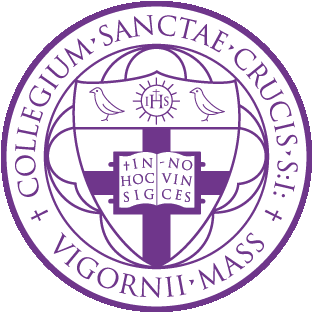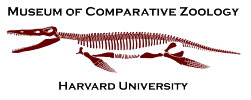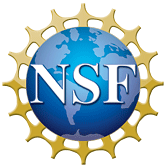Right Femur (Right Femur) of the Greater snow goose Anser caerulescens atlantica (MCZ 342155)
Rotate: left click on mouse
Zoom: right click on mouse (PC) or command and click (Mac)
Move: left and right click simultaneously (PC) or shift and click (Mac)
| Phylogenic Position | |
|---|---|
| Aves - Neognathae - Anseriformes - Anatidae - Anser - Anser caerulescens atlantica | |
| Species Description | |
|
There are two subspecies of the Snow Goose: the Lesser (C. caerluscens caerluscens) and Greater (C. caerluscens atlanticus) Snow Goose. The Lesser Snow Goose has two color morphs (white and blue) and is able to hybridize with Ross Goose. It breeds along Queen Maud Gulf, Baffin Island, Hudson Bay and the Northwest Territories, while wintering in the Central Valley of California and along the Gulf Coast of Texas, Louisiana and Mexico. The Greater Snow Goose looks like a slightly larger edition of the white-phase Lesser Snow Goose. It breeds around Foxe Basin, Northern Baffin and the Ellesmere Islands of Nunavut and Greenland; in the winter, it migrates down to the mid-Atlantic coasts (from New Jersey to North Carolina). In the field, it is difficult to tell the two subspecies apart (save for the Lesser Snow Gooses blue morph), but the longer bill of the Greater Snow Goose helps to distinguish it from its smaller counterpart. |
|
| Specimen Information | |
| Species | Anser caerulescens atlantica (Greater snow goose) |
| Element | Right Femur (Right Femur) |
| Specimen Number | MCZ 342155 |
| Sex | |
| Location | |
| Geological Age | Recent |
| Technical Information | |
| Scanner | Konica Minolta Range7 |
| Resolution | 40 µm |
| Number of Data Points | 149926 |
| Number of Data Polygons | 74967 |
| Date Scanned | July 19, 2012 |
| Scan Technician | Greg Monfette |
| Edited By | Greg Monfette |
| Photographs | |
|
View All 5 Images |
|
| Download Digital Model | Size |
| STL File Not Publicly Available | 7.5 MB |
| Other Anser caerulescens atlantica (Greater snow goose) Elements | |
| Specimen | Element |
| MCZ 342155 | Sternum (Breast Bone) |
| MCZ 342155 | Left Humerus (Left Upper Arm Bone) |
| MCZ 342155 | Right Ulna (Lower Arm Bone ) |
| MCZ 342155 | Left Radius (Lower Arm Bone) |
| MCZ 342155 | Right Radius (Lower Arm Bone ) |
| MCZ 342155 | Furcula (Wishbone) |
| MCZ 342155 | Left Tibiotarsus and Fibula (Left Middle Leg Bones) |
| MCZ 342155 | Left Tarsometatarsus (Left Fused Element Consisting of Ankle and Middle Foot Bones) |
| MCZ 342155 | Right Tarsometatarsus (Right Fused Element Consisting of Ankle and Middle Foot Bones) |
| MCZ 342155 | Right Tibiotarsus (Middle Leg Bone, Right) |
| MCZ 342155 | Left Femur (Left Upper Leg Bone) |
| Institution Data Use Policy | |
| http://www.mcz.harvard.edu/privacy/user.html | |




